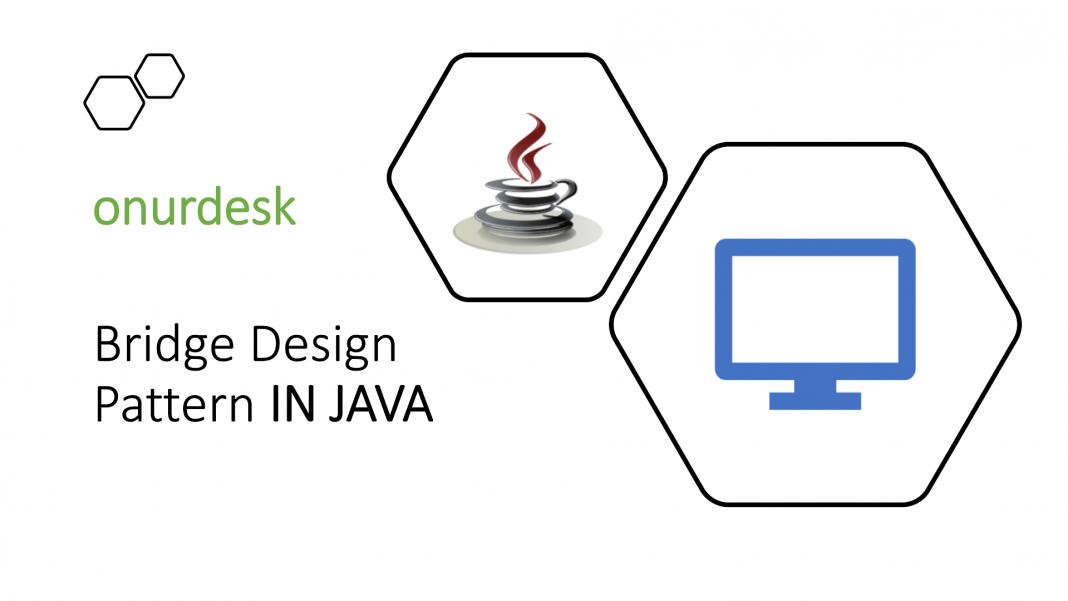This article discusses how parallel class hierarchies or layers can be decoupled from one another using the bridge design pattern.
This Articles Contents
Introduction to Bridge Design Pattern
A physical bridge provides connectivity between two points. The bridge pattern describes how to pull apart two software layers fused together in a single class hierarchy and change them into parallel class hierarchies connected by a bridge.
The bridge pattern can be applied to scenarios where the class and what it does changes often. Think of it as two layers of abstraction. The class itself becomes one layer and what it does i.e. the implementation becomes another layer. This setup allows us to extend the two layers independently of each other. In Java, both the layers would be represented by two separate class hierarchies. The bridge sits between these two class hierarchies, allowing the class abstraction to configure itself with the implementation abstraction.
Formally, the bridge design pattern lets you vary the abstraction independently of the implementation, thus decoupling the two in the process. However, the abstraction and the implementation in the definition don’t mean Java’s abstract class/interface and concrete classes respectively.
Understand class diagram Bridge Design Pattern
The class diagram consists of the following entities
- Abstraction
- Refined Abstraction
- Implementor
- Concrete Implementor


Suppose you are writing software for Toyota Motors and need to represent the most sold car in the world – the Toyota Corolla. We’ll use an abstract class Corolla to represent the car. The concrete classes would represent each of the different models of the car. So far so good. However, the same model could be built to different standards for different locales. For instance, the North American model may have different safety requirements than an Asian model. The same model could be left or right-handed depending on which country it is being shipped to. Corolla has several models and the models have different names in different countries. In the US, the different models include L, LE, XLE, etc. For our purposes, we’ll consider only one model L.
Let’s see how the class hierarchy would look like.


We can divide the above class structure into two hierarchies. One that just represents the models of the car and another that represents the location specific variations for each model of the car. After applying the pattern the class diagram would look like below:


So you can see there’s one hierarchy of class the Corolla which would have subclasses for each of the models, however, the actual car produced by the factory may be different from another car of the same model that is destined for a different country. The implementation of the car would make up a separate class hierarchy CorollaImpl which will have implementation subclasses for each of the Corolla models and have information such as safety equipment installed, whether the car is left or right-handed drive etc.
You would have guessed by now that the class Corolla (the abstraction) would hold a reference to an object of the class CorollaImpl (the implementation) and invoke method calls on the implementation object. We are using object composition to add location-dependent behavior to each model of the car.
Let’s examine the first-class hierarchy that represents the car Corolla and acts as the abstraction.
package com.onurdesk;
public abstract class AbstractCorolla {
protected AbstractCorollaImpl corollaImpl;
public AbstractlCorolla(AbstractCorollaImpl corollaImpl) {
this.corollaImpl = corollaImpl;
}
abstract void listSafetyEquipment();
abstract boolean isCarRightHanded();
}The AbstractCorolla holds a reference to the implementation class AbstractCorollaImpl object. The abstract class AbstractCorollaImpl forms a parallel class hierarchy and is defined below.
package com.onurdesk;
public abstract class AbstractCorollaImpl {
abstract void listSafetyEquipment();
abstract boolean isCarRightHanded();
}The class that represents the model L is shown below:
package com.onurdesk;
public class Corolla_L extends AbstractCorolla {
public Corolla_L(AbstractCorollaImpl corollaImpl) {
super(corollaImpl);
}
@Override
void listSafetyEquipment() {
corollaImpl.listSafetyEquipment();
}
@Override
boolean isCarRightHanded() {
return corollaImpl.isCarRightHanded();
}
}We’ll have corresponding implementation classes for the L model. They are given below:
package com.onurdesk;
public class Corolla_L_Impl_NorthAmerica extends AbstractCorollaImpl {
@Override
void listSafetyEquipment() {
System.out.println("High safety standards.");
}
@Override
boolean isCarRightHanded() {
return true;
}
}The client can use the classes like so:
public class Client {
public void main() {
AbstractCorolla myCorolla = new Corolla_L(new Corolla_L_Impl_AsiaPacific());
System.out.println(myCorolla.isCarRightHanded());
myCorolla.setCorollaImpl(new Corolla_L_Impl_NorthAmerica());
System.out.println(myCorolla.isCarRightHanded());
}
}Note how the client can switch out the implementation class object at runtime and make the model behave for an entirely different location. Using the bridge pattern we have avoided permanent binding of models and their intended locations of operation. The client can continue to work with the objects of the abstraction layer without noticing any changes to implementation layer classes. New safety rules or regulations would only affect the implementation layer classes.

